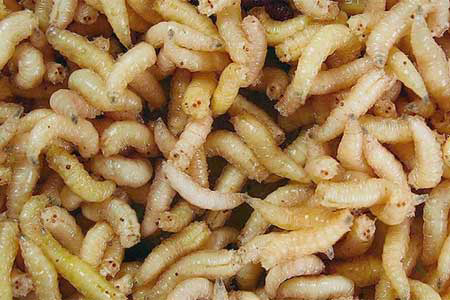South Africa: Insect farms; big profits in maggots

Work on the world’s largest fly farm has begun in South Africa after the European firm behind the project won much-needed funding from investors, propelling the use of insects as livestock feed beyond academic theory to a commercial venture.
The project near Cape Town was conceived by a group of scientists and environmentalists racing to find protein alternatives as rising production of livestock feed such as soy gobbles up more and more valuable agricultural land.
The farm, being built by Gibraltar-based AgriProtein, will house 8.5 billion of flies that will produce tons of protein-rich larvae as they feed on organic waste. The tallest barrier to such startups has been the availability of capital, with potential investors deterred by legislative hurdles.
But given the prospect of getting hundreds of times more protein feedstock from a single hectare of land compared to traditional sources, political objections are starting to come down. The success of AgriProtein in securing $11 million in funds, while small, is a sign investors are warming to the idea that insects could be big business in the years ahead.
With human consumption of meat tipped to soar, and the increasing impact that livestock production is having on the environment, governments are now considering the use of processed insects as animal feed.
The European Commission is relaxing rules to allow the inclusion of insects in poultry and pig feed from 2015, while the US Food and Drug Administration is considering an application from US company EnviroFlight to sell livestock feed made from insects.
Livestock production, which accounts for 70% of all agricultural land, is seen by the United Nations as a leading cause of environmental problems including global warming, land degradation, air and water pollution, and loss of biodiversity.
Referring to forecasts from the UN that food production will need to rise 70% by 2050, Professor Arnold van Huis, tropical entomologist at Wageningen University, said, “It is clear to everybody that we need urgently protein alternatives that are less demanding.”
AgriProtein will use a combination of the black soldier fly, the blowfly and the common housefly. In cages, the flies will be fed a mix of spoiled or leftover food, manure, and abattoir waste. They will then be left to breed. Their larvae will afterwards be dried and processed into an animal feed.
When sold, the AgriProtein feed is likely to be 15% cheaper than fishmeal. While having a price advantage on fishmeal, PROteINSECT, the EU-funded project investigating the efficacy and safety in using insect protein as a source of animal feed, says insect feed will likely never fully substitute for traditional protein sources. They will rather alleviate environmental pressures, as demonstrated by trials last year.
Based on UK trials, Elaine Fitches of the UK government-run Food & Environment Research Agency said it would be possible to get on average 150 tonnes of protein from a hectare of land per year, significantly above 0.9 tonne of soy per hectare.
Reuters











